One of the most common questions we’re asked by clients is ‘what is the difference between a vector file and a JPEG?’ They’re both image files so in that respect: nothing. How those files behave, however, is radically different and has a major impact on what you can do with your design.
Most image files like JPEGs, GIFs and Bitmaps are made up of a grid of pixels. This grid defines the parameters of an image in a set way. It can be no bigger than x pixels by y pixels per inch without the quality of the image being compromised.
The higher the resolution the bigger the grid, the larger the image will be. Oversize a JPEG or a PNG and the image will start to seem blocky or fuzzy.

The smaller the starting size, the worse the image will look.
If you zoom in on a circle within a bitmap file you will see it’s not round at all, but made up of thousands of squares, but designed that give the impression of roundness.
As that image is enlarged beyond its original size those blocks will become increasingly apparent and you will end with an image that looks like it was made out of Lego - like the example above.
Vectors exist in a mathematical space as opposed to a literal space like pixels. They are created from equations rather than blocks of pixels. This means there is no limit to the size and therefore there is no deterioration in quality. It also means that when you zoom in, the circle remains round because the control points that dictate the object's shape never change.
Vectors have been used since the 1960s and most commonly associated with the advent of Computer Aided Design but with the rise of digital photography and the need for small file sizes for use online, JPEGs and the like became increasingly common.
Similarly, as long as the elements within a print PDF are high enough resolution there is no need for vectors in print.
Or is there?
Vectors, as mentioned, do not suffer from deterioration which means there is never an issue regarding resolution. If the size of the document changes at the last minute and artwork needs to be amended it can be done with relative ease.
More than anything, the definition and crispness of the print will be absolutely perfect.
Vector files can be used in any piece of artwork as the very nature of the file allows it work with anything from a business card to a bus siding.
Where they prove their most useful is for large format print. JPEGs and other bitmap images simply won’t give you the quality you need.
If you need a vector file format but only have bitmap, it can be traced and redrawn but it’s better to redraw the individual elements before the process starts rather than waiting until the end.
The safest option is to check with us first. Whilst vector files undoubtedly make sizing a painless process, it is not always necessary. We offer a full design service so we can work with you to produce stunning design, printed to the highest industry standards.


